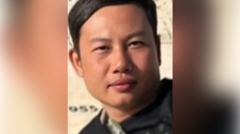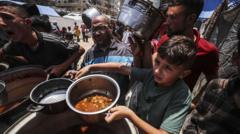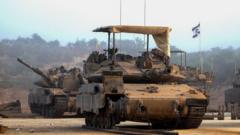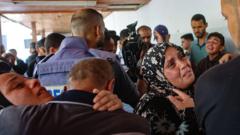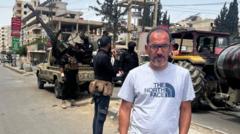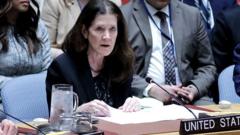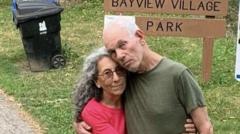Multiple shootings of aid personnel in Gaza raise serious concerns over their safety and the conduct of military operations.
**Tragic Loss of Gaza Aid Workers Sparks Outrage Amid Violence**

**Tragic Loss of Gaza Aid Workers Sparks Outrage Amid Violence**
The United Nations condemns the killings of humanitarian workers as their bodies reveal signs of brutality.
In a disturbing revelation from Gaza, officials from the Palestine Red Crescent Society reported that the bodies of 15 humanitarian workers, which were recently recovered from a mass grave, displayed multiple gunshot wounds. This comes in the wake of the UN's condemnation of Israel following the deaths of these aid workers, who went missing on March 23, during a military operation in the southern city of Rafah.
A spokesperson for the Palestine Red Crescent, Nebal Farsakh, stated that out of the 15 recovered bodies, almost all exhibited signs of gunfire wounds; one paramedic was discovered with his limbs bound, indicative of a brutal murder rather than collateral damage. "My colleagues faced unimaginable violence; many of them sustained multiple gunshots. They were discovered in a shallow grave alongside their crushed ambulances,” Farsakh recounted during a phone interview from Ramallah, expressing the grief of losing fellow rescuers.
The unfortunate deaths of these workers have ignited widespread international criticism, highlighting the precariousness of humanitarian efforts in conflict zones. The incident, said to have occurred during an assault on ambulances and a U.N. vehicle, has left many questioning the military’s operational protocols. Following the recovery, the Israeli military claimed that they had identified nine of the deceased as Palestinian militants, asserting that their forces did not intentionally target an ambulance but acted upon observing multiple vehicles advancing without proper identification.
This tragedy intensifies the ongoing discourse about the safety and protection of humanitarian workers in regions afflicted by warfare, as the need for their noble efforts to assist those in need is overshadowed by the dangers they face on the ground.
A spokesperson for the Palestine Red Crescent, Nebal Farsakh, stated that out of the 15 recovered bodies, almost all exhibited signs of gunfire wounds; one paramedic was discovered with his limbs bound, indicative of a brutal murder rather than collateral damage. "My colleagues faced unimaginable violence; many of them sustained multiple gunshots. They were discovered in a shallow grave alongside their crushed ambulances,” Farsakh recounted during a phone interview from Ramallah, expressing the grief of losing fellow rescuers.
The unfortunate deaths of these workers have ignited widespread international criticism, highlighting the precariousness of humanitarian efforts in conflict zones. The incident, said to have occurred during an assault on ambulances and a U.N. vehicle, has left many questioning the military’s operational protocols. Following the recovery, the Israeli military claimed that they had identified nine of the deceased as Palestinian militants, asserting that their forces did not intentionally target an ambulance but acted upon observing multiple vehicles advancing without proper identification.
This tragedy intensifies the ongoing discourse about the safety and protection of humanitarian workers in regions afflicted by warfare, as the need for their noble efforts to assist those in need is overshadowed by the dangers they face on the ground.

